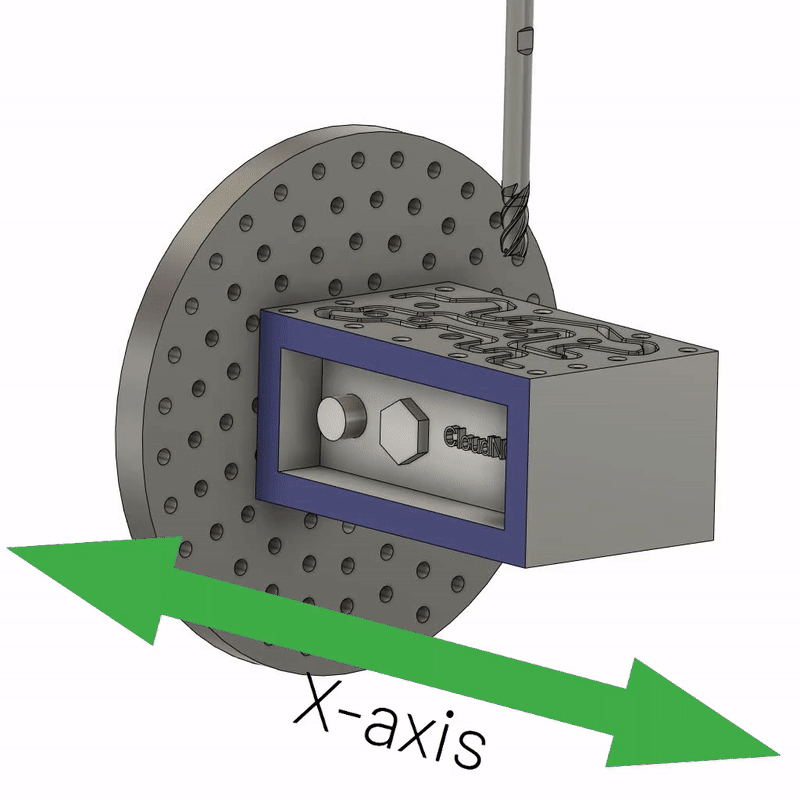4 Axis CNC Machine: The Complete Guide in 2023
Updated: May 05, 2024
Since 3-axis computer numerical control (CNC) centers were popular, machines for shaping workpieces improved significantly. One enhancement that has positively influenced machining quality is the addition of the 4th axis.
Despite 4-axis machines being prevalent, not many sources include relevant information that assists in determining the specificities of particularly those automated centers. It leads to confusion and complicates choosing the appropriate computer-controlled piece of machinery for a manufacturer’s needs.
This post will provide the most relevant, for the year 2022, information regarding 4-axis CNC machines, their types, operation method, advantages, and the scope of application.
1. What is a 4 Axis CNC?
CNC center is any milling, turning, routing, or any other type of computer-based machine intended to remove material from a workpiece to achieve the desired design. Simultaneously, a 4-axis CNC is a piece of machinery having 4 axes, three of which are linear movement ones, and one is a rotational axis. It also utilizes a cutting tool inserted in a movable spindle for a workpiece shaping.
4-axis CNC centers are intended to replace basic versions of CNC machines and are helpful for large-scale orders and intricate designs.
2.How does a 4th Axis CNC Work?
To begin with, primary CNC machines having 3 linear axes enable moving a spindle in 3 dimensions, which are X, Y, and Z, respectively. In other words, the cutting tool can move back to front, side to side, and up and down. An advanced CNC center has an A-axis, which is shown in the image below.
Axis A is not a linear movement but a rotational one. It enables the rotation of a workpiece about the X-axis. As a result, it is possible to remove material not only from the front of a workpiece but from any part of its surface and at any angle.
The 4th axis requires additional programming, which complicates the preparation stage. Not many programming solutions are intended to create a 2D or 3D model and transform it into a set of instructions for a CNC machine to execute, enabling correctly synchronized 4-axis operations.
Therefore, advanced machines require a more professional approach, often ensured by full-fledged CAM software going beyond primary means of coding.
The presence of the A-axis is vital for most machining processes as it significantly expands the range of operations a single machine unit can perform.
3. Types of 4 Axis CNC Machining
Index 4 Axis CNC Machining
Each 4-axis CNC machine has index mode or access and continuous mode. Indexing implies that a cutting tool does not operate until the 4th axis has stooped. Different types of brakes (that are often called “indexers’ ‘) are used to lock this axis in a certain position before proceeding to a workpiece shaping.
Continuous 4 Axis CNC Machining
In contrast to index 4-axis CNC machining, continuous mode enables removing material with a spindle while a workpiece is being rotated about the 4th axis. It is mostly utilized in the lathe and turning centers which machine workpieces symmetrical from the axial perspective.
Continuous machining is known to be more complex from the perspective of pre-programming than index one. It is so because of the necessity to perfectly synchronize rotating and cutting operations, usually performed with a number of tools simultaneously.
4. Advantages of 4 Axis Machining Services
There are several advantages of 4 axis CNC machining services deriving from the way machines with the added dimension operate.
Economically viable.
Compared to 3-axis machines, which process a part needed to be shaped from two sides in two fixtures, 4-axis centers machine such components in only one fixture. It results in lower expenses needed to produce a part.
Elimination of human error risk and higher accuracy.
Without re-setup a part before continuing machining its other side, the possibility of obtaining a sub-quality product is significantly reduced.
Less time-consuming.
4-axis CNC machines enable more rapid production of components than their basic 3-axis versions.
5.Application
The scope of application of 4-axis CNC machines is the same as for 3-axis computer-based centers. However, due to the increased number of options advanced machines can offer, combining machining techniques in a single unit is possible. It eliminates the need to involve many less versatile centers in complex designs.
Purposes 4-axis CNC machines can include but are not limited to creating pieces of art, medical equipment, industrial parts, and high-tech components. Advanced machines can be modified multiple times and often propose to combine milling, turning, facing, boring, drilling, reaming, and other operations.
6. Final Word
4-axis CNC machines are the advanced versions of basic 3-axis ones. Modified centers have additional A-axe enabling them to rotate a workpiece about the X-axis.
Such an approach expands the range of opportunities that CNC machines can provide, enabling them to create intricate designs at lower costs and faster production rates.
Intricate 4-axis machining is intended to block the additional axis before cutting, while the continuous one enables it to perform turning operation.
However, advanced centers require more proficient software to prepare a CNC equipment unit for material shaping. 4-axis CBC centers can fully replace 3-axis ones and become more and more prevalent in all industrial spheres.